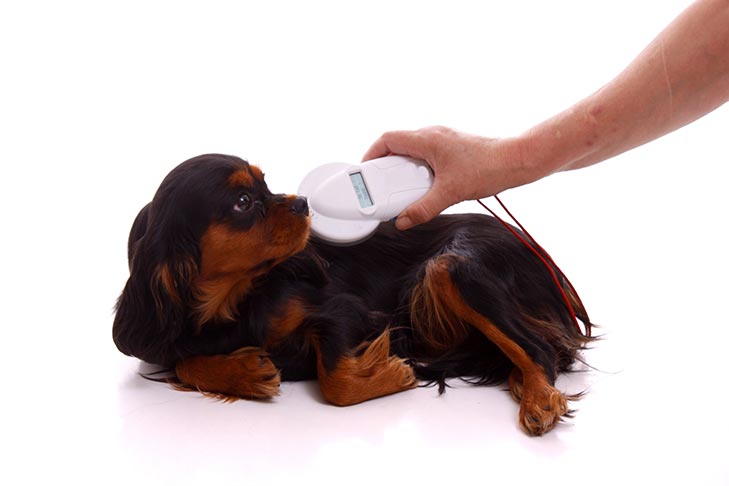What is a Microchip?
A microchip is a small transmitter, no larger than a grain of rice. The microchip possesses a unique identification number. This identification number can be extremely helpful in reuniting a lost pet with their owner, or as a means of proving ownership.
How Do We Microchip?
The microchip is implanted just under the skin, using a fairly large needle. Implantation can be done in newborns, however, because there is a little bit of pain associated with the procedure, many people opt to wait until their pet is being spayed or neutered, so that they are under anesthesia at the time the microchip is inserted. This is beneficial because any pain associated with the needle is eliminated. However, keep in mind, there is a drawback to waiting – the risk that your pet become lost or separated from you, in the meantime, without proper identification. Extra precaution should be taken to ensure your pet can’t become lost. Wearing a collar with a name tag can also be a good secondary security measure.
How Does Microchipping Work?
In the event the pet was lost or separated from their owner, the microchip can be used to reunite the pet! Unfortunately, the microchip is not a location device. The microchip cannot be used to tell us where the pet is, if lost. However, in the event your pet is found and brought to either a veterinary clinic or an animal shelter, they will use a scanner to pull up the microchip identification number and subsequently the owner’s contact information. This is why it’s not only important to register the microchip (often is done complimentary by the shelter or veterinary clinic), but also to keep the contact information up to date. If you move, or change telephone numbers, it’s important to call into the microchip company and update your information. We wouldn’t want any dead ends in the quest to reunite a lost pet with their owner!
If you haven’t already microchipped your beloved pet, call your veterinarian today!


